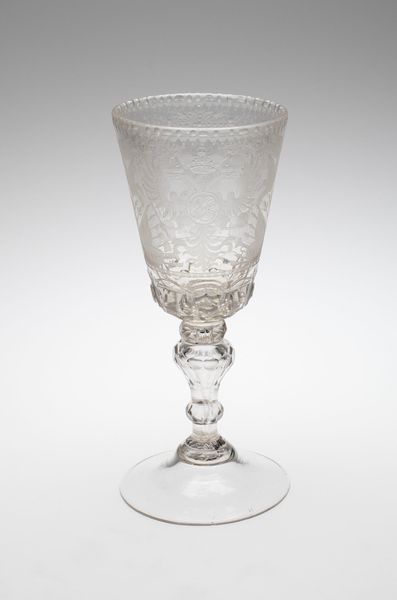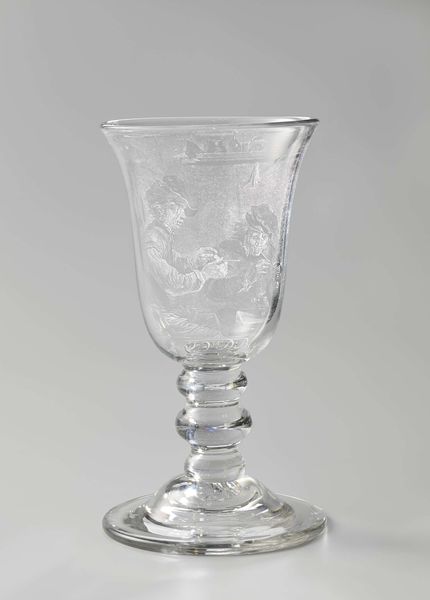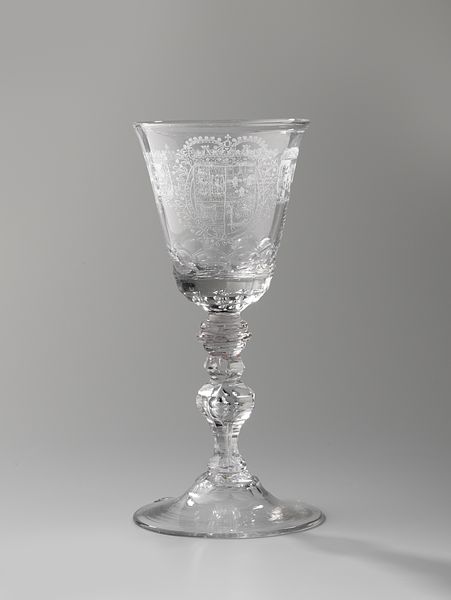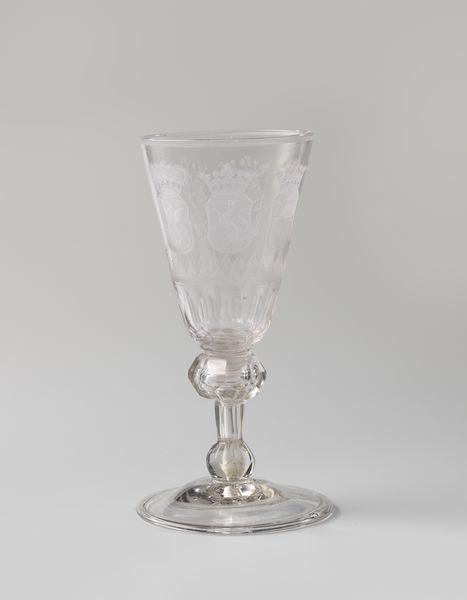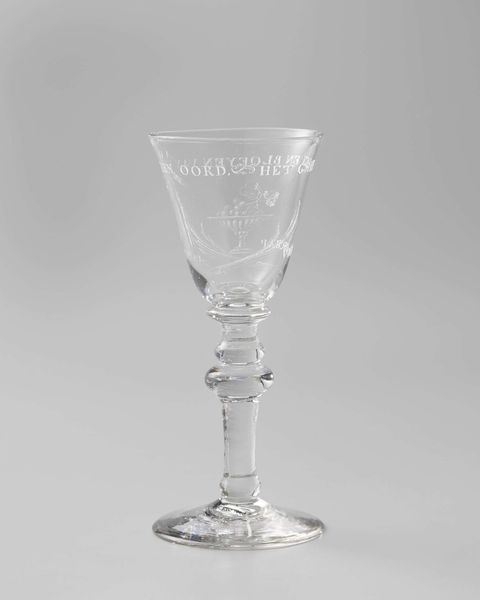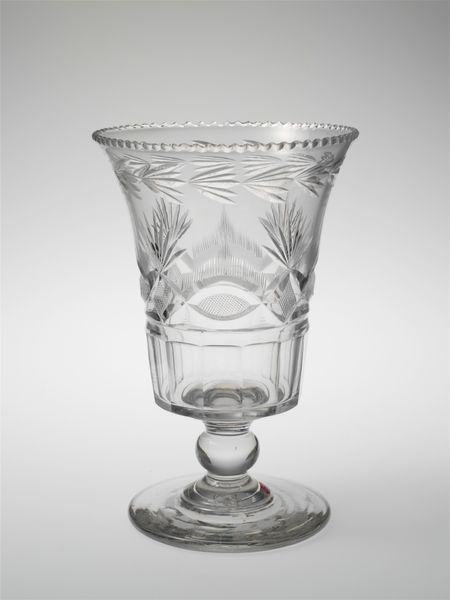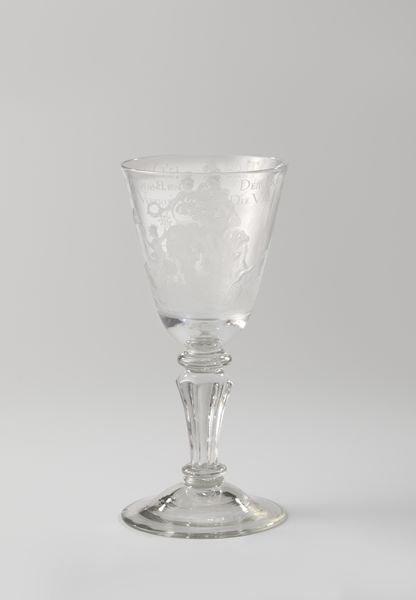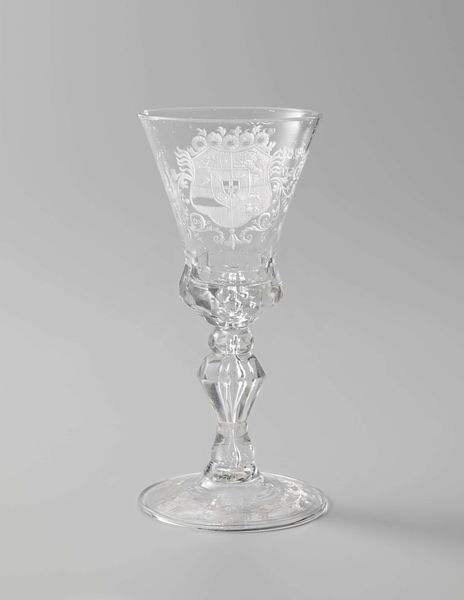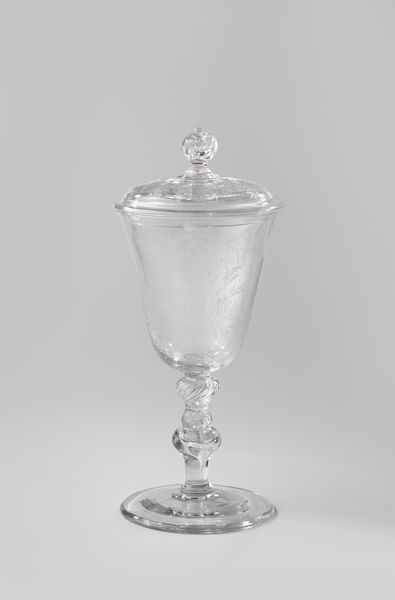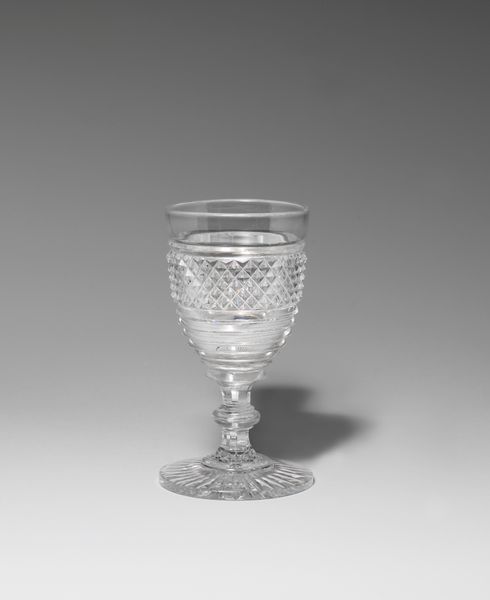
ceramic, glass
#
neoclacissism
#
ceramic
#
glass
#
stoneware
#
ceramic
#
united-states
#
decorative-art
Dimensions: H. 9 in. (22.9 cm); Diam. 3 7/8 in. (9.8 cm)
Copyright: Public Domain
Editor: So, here we have a celery vase made by Benjamin Bakewell & Co. sometime between 1810 and 1820. It’s made of glass, and it's currently housed in the Metropolitan Museum of Art. It seems so delicate. I'm struck by the level of detail in something seemingly so functional. What jumps out at you when you see this? Curator: It's interesting to consider this piece as part of the burgeoning glass industry in the early 19th-century United States. Bakewell's company was at the forefront, pioneering new techniques and technologies. Look closely at the cut glass—the skill involved in shaping and decorating this material points to a sophisticated division of labor. Where were the raw materials sourced, and who was involved in each stage of production? The sourcing and extraction methods and labor of glassblowing speak volumes about economic dependencies and social hierarchies of that time. Editor: So you're less interested in its pure aesthetics and more in what it represents about the means of production? Curator: Precisely. This wasn't simply about making a pretty vase; it was about establishing American manufacturing capabilities and creating a market for luxury goods. Who was consuming these celery vases? And what does that tell us about social aspirations and class distinctions? Celery itself was a luxury item at the time! Editor: It makes you think about what we consider valuable and who determines that value, doesn’t it? Curator: Absolutely. Consider also how the materials used—glass rather than ceramic, for example—would influence cost, durability, and even transportability of these pieces and the resources invested for each. Editor: I hadn’t considered the implications of choosing glass versus another medium. So, thinking about the materials and labor behind this piece really does give it another layer of meaning beyond its Neoclassical style. Curator: Right. The style speaks to aspirations, but the substance, quite literally, lies in understanding its material and social construction. Editor: That’s a perspective I'll definitely carry with me. Thanks for the insight!
Comments
No comments
Be the first to comment and join the conversation on the ultimate creative platform.
